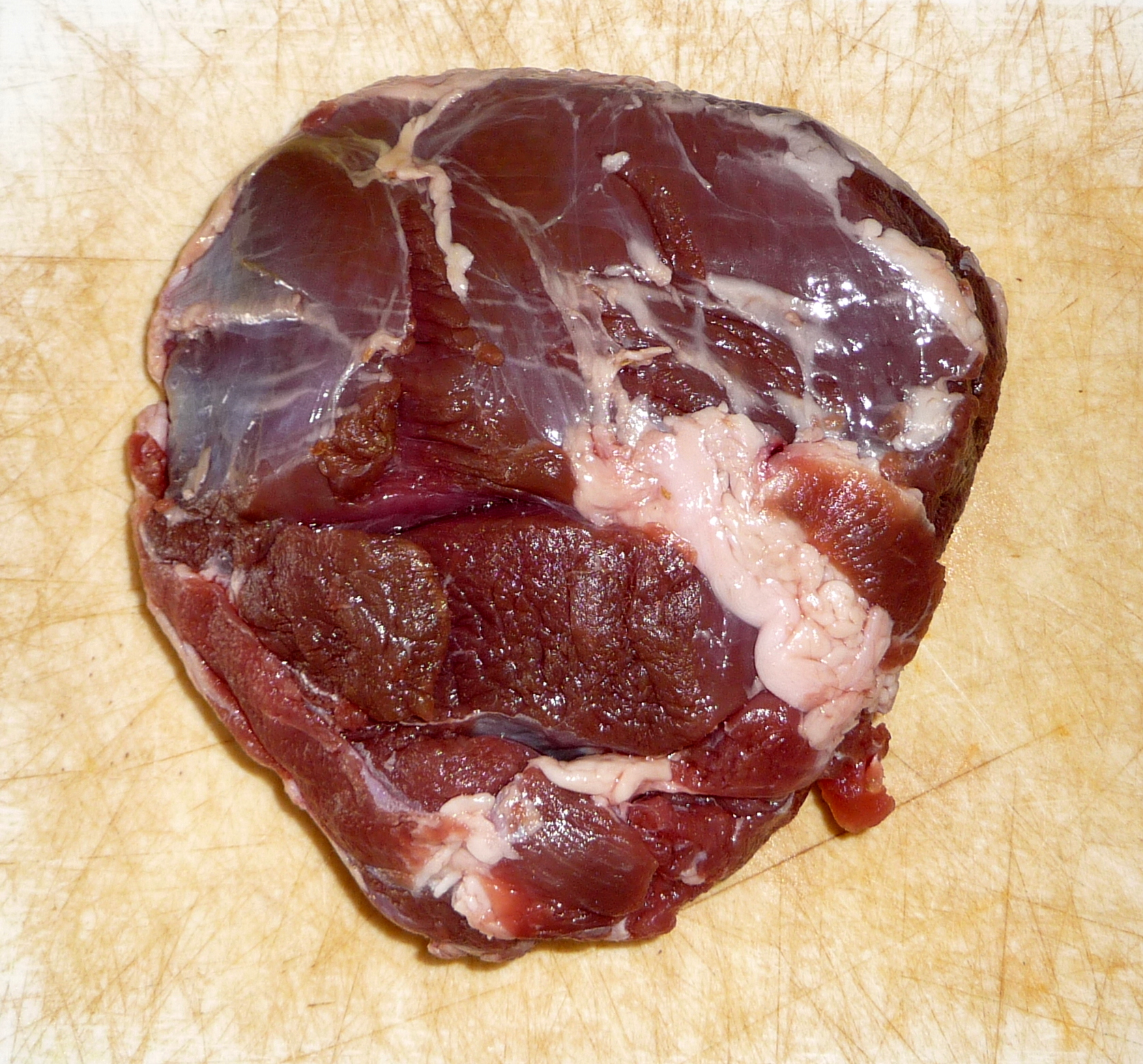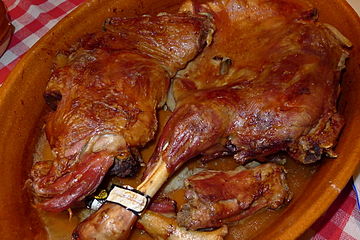
Lamb and mutton
Sheep meat is one of the most common meats around the world, taken from the domestic sheep, Ovis aries, and generally divided into lamb, from sheep in their first year, hogget, from sheep in their second, and mutton, from older sheep. Generally, "hogget" and "sheep meat" are not used by consumers outside Norway, New Zealand, South Africa, Scotland, and Australia. Hogget has become more common in England, particularly in the North (Lancashire and Yorkshire) often in association with rare breed and organic farming.
"Mutton" redirects here. For goat meat, which is what 'mutton' primarily refers to in South Asia and the Caribbean, see goat meat. For other uses, see Mutton (disambiguation).
In South Asian and Caribbean cuisine, "mutton" often means goat meat.[1][2][3][4][5] At various times and places, "mutton" or "goat mutton" has occasionally been used to mean goat meat.[1]
Lamb is the most expensive of the three types and in recent decades sheep meat is increasingly only retailed as "lamb", sometimes stretching the accepted distinctions given above. The stronger-tasting mutton is now hard to find in many areas, despite the efforts of the Mutton Renaissance Campaign in the UK. In Australia, the term prime lamb is often used to refer to lambs raised for meat.[6] Other languages, such as French, Spanish, and Italian, make similar or even more detailed distinctions among sheep meats by age and sometimes by sex and diet—for example, lechazo in Spanish refers to meat from milk-fed (unweaned) lambs.
The meat of a lamb is taken from the animal between one month and one year old, with a carcass weight of between 5.5 and 30 kg (12 and 66 lb). This meat generally is more tender than that from older sheep and appears more often on tables in some Western countries. Hogget and mutton have a stronger flavour than lamb because they contain a higher concentration of species-characteristic fatty acids and are preferred by some.[22] Mutton and hogget also tend to be tougher than lamb (because of connective tissue maturation) and are therefore better suited to casserole-style cooking, as in Lancashire hotpot, for example.
Lamb is often sorted into three kinds of meat: forequarter, loin, and hindquarter. The forequarter includes the neck, shoulder, front legs, and the ribs up to the shoulder blade. The hindquarter includes the rear legs and hip. The loin includes the ribs between the two.
Lamb chops are cut from the rib, loin, and shoulder areas. The rib chops include a rib bone; the loin chops include only a chine bone. Shoulder chops are usually considered inferior to loin chops; both kinds of chops are usually grilled. Breast of lamb (baby chops) can be cooked in an oven.
Leg of lamb is a whole leg; saddle of lamb is the two loins with the hip. Leg and saddle are usually roasted, though the leg is sometimes boiled.
Forequarter meat of sheep, as of other mammals, includes more connective tissue than some other cuts, and, if not from a young lamb, is best cooked slowly using either a moist method, such as braising or stewing, or by slow roasting or American barbecuing. It is, in some countries, sold already chopped or diced.
Lamb shank definitions vary, but generally include:
Mutton barbeque is a tradition in Western Kentucky. The area was strong in the wool trade, which gave them plenty of older sheep that needed to be put to use.[23]
Thin strips of fatty mutton can be cut into a substitute for bacon called macon.
Lamb tongue is popular in Middle Eastern cuisine both as a cold cut and in preparations like stews.[24]
Production and consumption figures[edit]
Sheep meat consumption[edit]
According to the OECD-FAO Agricultural Outlook for 2016, the top consumers of sheep meat in 2015 were as follows:[28] EU countries are not individually surveyed in this list. Among EU nations, Greece is the per capita leader in consumption at 12.3 kg,[29] while the UK's annual per capita lamb consumption is 4.7 kg.[30] Outside of the OECD, the largest per capita consumer overall is Mongolia, with 45.1 kg.[30]
Sheep meat production[edit]
The table below gives a sample of producing nations, but many other significant producers in the 50–120 kt range are not given.






